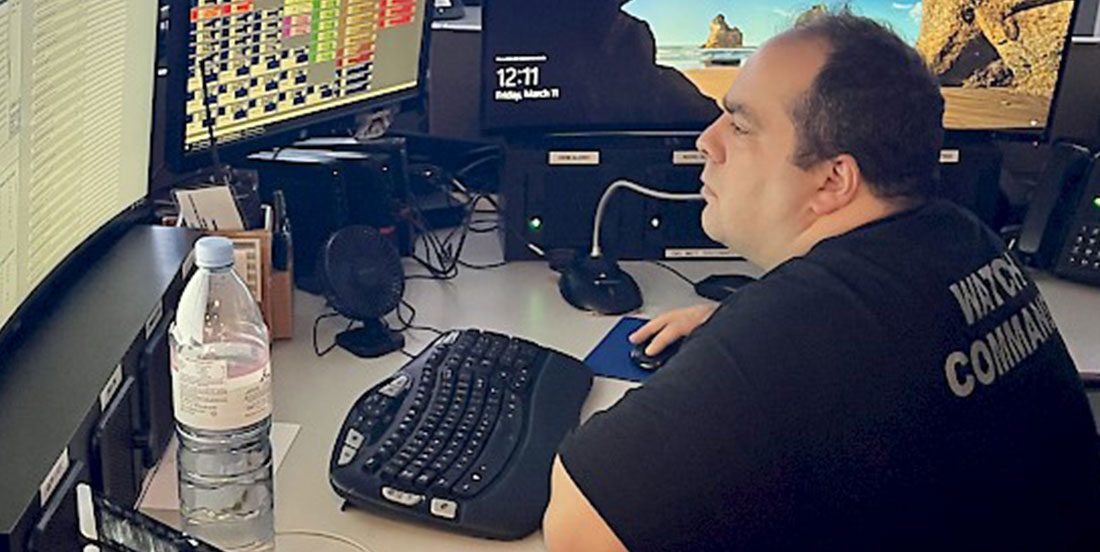Although power outages may be a nuisance, recent disasters have proven that communication redundancies are paramount, especially for critical care facilities that assist older adult populations, such as hospitals, retirement homes, and rehabilitation centers. The New York City (NYC) Emergency Management Department’s emergency radio communications program fulfills that need.
Updating an Established Communications Program
Established in 2014, this program continues to serve as an auxiliary line of communication for area healthcare facilities. The program is mutually beneficial. Not only does it provide an additional means for critical care facilities to communicate with NYC Emergency Management when first lines of defense (i.e., communication pathways such as landlines, cell service, texting, and internet) are compromised or inoperable, it also allows NYC Emergency Management to provide participants with situational awareness during emergencies.
Healthcare facilities are responsible for the safety and well-being of vulnerable populations. This program offers reliable communications during an emergency.

In 2021, the New York City Department of Information and Technology Telecommunications (DoITT) upgraded its equipment and programming of the NYC DoITT Citywide Radio Network with a new operating system to better streamline communication and alleviate radio traffic. The program’s goal is to ensure that the facilities’ equipment is compatible and compliant before switching over to the new system. NYC Emergency Management’s health and medical unit, which oversees the program, has been working steadfastly to confirm radios are compatible with the newly established network by swapping out or reprogramming the provided equipment.
Approximately 320 radios were issued to hospitals, nursing homes, adult care facilities, and the New York Blood Center. The equipment includes the APX 4000 handheld portable radio, the APX 4500 base station radio, or the consolette radio APX 8500 with the MCD 5000 desk set. Equipment issuance depends mainly on transmit ability. The day-to-day operation and maintenance are also conducted by the health and medical unit.
How It Works
Participating organizations receive radio equipment and are trained in radio operations and etiquette. The facilities can then communicate with NYC Emergency Management’s 24/7 operations center, known as Watch Command. Watch Command monitors citywide radio frequencies as well as local, national, and international media and weather. There are currently 276 participating partners in the program across the five boroughs of New York City, and that number continues to grow.
Watch commander conducting roll call with healthcare facilities at NYC Emergency Management’s Emergency Operations Center in Brooklyn, NY (Source: NYC Emergency Management, 2022).
“The emergency radio communications program is a lifeline connecting us to help at any time. It’s important to know we aren’t alone out there,” said Queens Nassau Rehabilitation and Nursing Center Administrator Joshua Teitelbaum in a personal interview conducted on March 10, 2022. “I can’t stress enough how vital it is for us to have this program as part of our emergency preparedness and to be partnered with NYC Emergency Management who can advise and offer valuable resources and aid to us at a click of a radio button. It has been a great education and in-service opportunity for our staff in participating in all the monthly drills.”
“At The Silvercrest Center, the emergency radio communications program prepares us for crisis management before it occurs. Crises occur when they’re least expected. Thus, a communication plan is a part of disaster preparedness,” said Dr. William Palumbo, vice president and chief operating officer at The Silvercrest Center for Nursing and Rehabilitation, in a personal interview conducted on March 11, 2022. “Having a crisis communication plan is a necessity for each long-term care facility to have before one happens. Attending the [program] exercises ensure us at The Silvercrest Center that we are ready.”
Although there is no cost to participate in the program, a set of standards and responsibilities outlined in the Memorandum of Understanding (MOU) must be adhered to. The MOU is signed by the receiving facility before installation. Healthcare facilities interested in participating in the program can contact NYC Emergency Management.
“The emergency radio communications program is a tool in the emergency management toolbox. It serves as another source of emergency communications when all other communication types have failed,” said New York City Emergency Management Health and Medical Specialist Maurice Zuniga, in a personal interview conducted on March 10, 2022. “I liken its availability to a fire extinguisher: always available but only used when [it is] really, really needed.”

Ashleigh Holmes
Ashleigh Holmes is the community and ethnic media relations senior press officer at the New York City Emergency Management Department, where she has responded to various emergencies. She assists Introductionthe press team in day-to-day press operations and serves as one of the agency’s spokespersons, helping to develop and distribute information to the news media. Before joining NYC Emergency Management, she worked in television news for over 10 years at WHDH-TV in Boston, MA.
- Ashleigh Holmeshttps://domesticpreparedness.com/author/ashleigh-holmes






